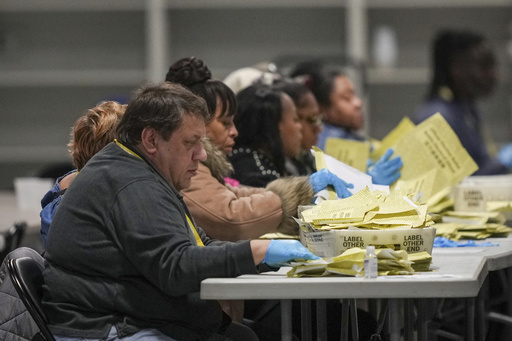
WASHINGTON — While the anticipated surge didn’t fully materialize, there was a notable shift towards Republican candidates in Pennsylvania, a pivotal battleground state. Donald Trump regained control of the state by boosting his performance, particularly by narrowing Democratic President Joe Biden’s winning margin in Philadelphia, solidifying his stronghold in rural areas, and turning several key suburban districts toward the GOP. The race was declared for Trump by 2:24 a.m. ET, with him leading by approximately 175,000 votes at that moment. Even in a scenario where Vice President Kamala Harris managed to win the outstanding ballots—most significantly from counties where she was faring poorly—by a significant margin, closing the gap would still be highly unlikely.
Trump’s influence was evident throughout Pennsylvania. In populous suburban regions like Bucks and Northampton Counties, he was ahead—areas that were seen as indicators in the previous election, which Biden won. Trump also made strides in Chester and Delaware counties, outpacing his former performance in these Philadelphia-area suburbs. Moreover, he was leading in Erie, a county in the northwestern part of the state that had narrowly gone to Biden in the last election. Even within the Democrat-dominant Philadelphia city limits, Trump improved his standings by 3 percentage points compared to the previous electoral cycle.
Candidates for this race include President Kamala Harris (D), Trump (R), Chase Oliver (Libertarian), and Jill Stein (Green). Trump’s victory became official as polls closed at 8 p.m. ET.
As the most competitive contest during this election period, Pennsylvania saw a flurry of campaigning, with both Harris and Trump making extensive visits—more than in any other state. The location holds significance for Trump, who survived an assassination threat in Butler over the summer. He has made numerous appearances at events across Pennsylvania, even taking part in community outreach by wearing an apron at a McDonald’s in suburban Philadelphia. Meanwhile, Harris highlighted her bipartisan appeal by visiting the historic site of George Washington’s crossing of the Delaware River during the Revolutionary War, striving to connect with disillusioned Republicans. In the final days of the campaign, she led a rally in Philadelphia, a key Democratic stronghold.
Trump had previously won Pennsylvania by a slim margin in 2016, while Biden narrowly defeated him in the 2020 election. Complications arose in the state regarding the new early voting option that allowed mail ballots to be requested before Election Day, which contributed to lines at polling places as voters sought early ballots. This situation unfolded amidst encouragement from Trump and Elon Musk for Republicans to consider mail-in voting, contrasting with Trump’s earlier unfounded claims of widespread fraud in mail ballots during the 2020 election.
The decision to call the race for Trump stemmed from his improved performance in traditionally Democratic strongholds, notably Philadelphia, as well as better margins in significant suburban areas. The race was deemed beyond reach for Harris once it became apparent that, even if she secured the remnant votes by a considerable margin, closing the distance with Trump was unfeasible.
